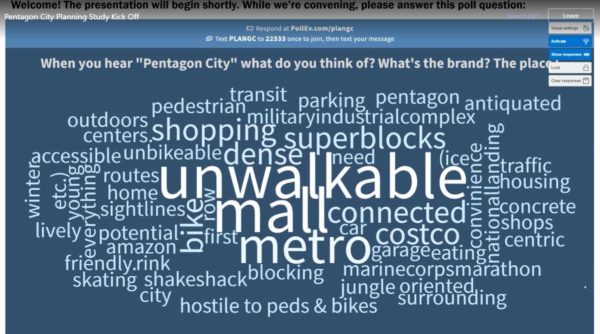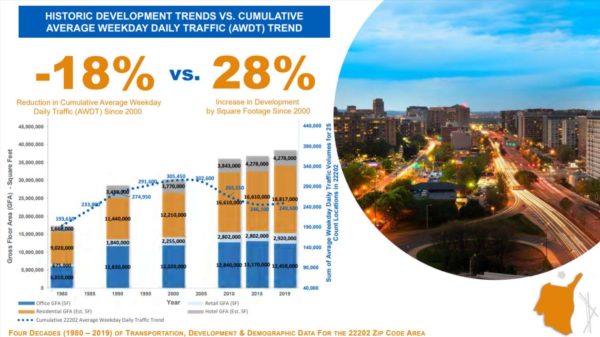 Making Room is a biweekly opinion column. The views expressed are solely the author’s.
Making Room is a biweekly opinion column. The views expressed are solely the author’s.
Last week, Arlington County staff held the community kick-off for the Pentagon City Planning Study.
The purpose of this multi-phase process is to determine the area’s capacity for future growth and ultimately make suggestions for zoning and land use changes. I hope the County recognizes the incredible opportunity to welcome more people into our dynamic, transit-accessible neighborhood by putting room for people above capacity for cars.
With the addition of Amazon’s second headquarters, Pentagon City will max out its designated density. But the demand for housing and office space continues to grow.
The master planning process for Pentagon City is an important step because the community can identify improvements that we hope development can bring, with walkability being one of the key attributes that neighbors want. The weakness in this process is the reliance on car-centric transportation analysis that could limit new housing by putting the needs of drivers ahead of current and future residents.
As Chris Slatt recently showed, our transportation forecasts, produce with each Site Plan Development, are flawed. They overestimate the number of car trips that a development will generate. The Multimodal Transportation Analysis (MMTA) reports produce reams of data for car trips and how those car trips may create rush-hour delay at intersections in the area in some future year, which can result in a development being downsized.
The overestimation of driving trips also pushes developments to have more parking spaces than they truly need. Our zoning code requires new developments to have enough parking for “all motor vehicles that may be expected to come to the premises at any time under normal conditions for any purpose.” But research shows that cheap and plentiful parking actually creates more parking demand by motivating people to drive.
The MMTA only addresses transit, walking, and bicycling in shallow terms. It doesn’t show the specific conditions of nearby transit, such as the wait times, trip times, reliability, or crowding. It doesn’t use data on the comfort level of nearby bicycle routes. It doesn’t offer objective measures for pedestrian safety that discourage people from walking.
This means that if the Pentagon City study finds that new housing could cause intersection delays, we would approve less housing. But that forecast is based on bad data on how many people might drive and no analysis of how to improve non-auto modes.
Why should the County set the capacity for residents and workers based on analysis of existing infrastructure, rather than adjust the infrastructure to meet the demand as it arrives? We can actually use density to decrease congestion by making the neighborhood more walkable and making room for people to live within walking distance of shops and offices.
The County’s own Pentagon City transportation data shows that this is possible. Currently, 24% of the households in the area are car-free and we added 1,100 new car-free households in the past 5 years. Three-quarters of all trips in Pentagon City occur by a mode other than a single-occupancy vehicle. In the past 20 years, the developed square footage in 22202 has increased by 24%, car trips have decreased by 18%.
With effective planning and investment, more people doesn’t mean more cars. But we need to change the way we measure our neighborhood’s development capacity and how we judge the impact of new projects.
Arlington (with the support of the Virginia legislature) should stop measuring development by “level of service” and instead measure the vehicle miles traveled, as California and DC have done. This would allow projects to use limited parking and transportation demand management to reduce the number of car trips. Arlington could also set lower parking minimums, like Alexandria did, based on actual utilization data, and try to outperform our success in attracting new residents that do not bring their cars.
We could require the Site Plan’s transportation analysis to identify weaknesses in the transit, biking, and walking networks. Instead of judging new project by their impact on cars, we could find ways to increase the share of walking, biking, and transit.
Don’t let the needs of cars place a cap on the number of people that can live and thrive in Pentagon City, or in Arlington. You can get involved by attending the first public workshop on October 15.
Thank you to @CarFreeHQ2 for help on this column.
Jane Fiegen Green, an Arlington resident since 2015, proudly rents an apartment in Pentagon City with her family. By day, she is the Membership Director for Food and Water Watch, and by night she tries to navigate the Arlington Way. Opinions here are her own.



